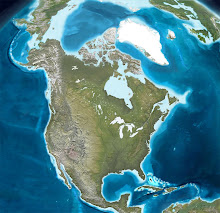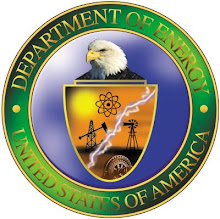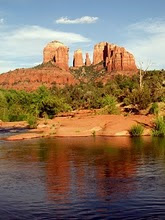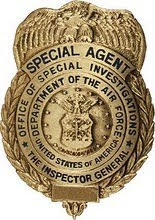By Steve Hammons
In 2016, a non-fiction book was published titled “The 37th Parallel: The Secret Truth Behind America's UFO Highway.” In the book, writer Ben Mezrich chronicled the explorations and investigations of former El Paso County, Colorado, (Colorado Springs region) reserve deputy sheriff Chuck Zukowski. The book was a New York Times bestseller for two months.
Zukowski has been featured in TV shows about UFOs and his theory about the 37th parallel (north). New Line Cinema (Warner Bros.) reportedly has a movie version concept based on Mezrich's book.
Mezrich looked at Zukowski’s speculation and theory that there is something about the region around the 37th parallel that seems to be a hot spot for UFO-related and unusual incidents. This includes the 36th parallel region to the south, and 38th to the north. (Each degree of latitude is approximately 69 miles wide.)
Because Mezrich is a well-known and prolific writer on a range of topics, the book received fairly widespread attention. Readers who might not normally focus on a UFO-related subject may have found Mezrich's research compelling.
There is also a unique location where the 37th parallel intersects with the Colorado Plateau and the Four Corners region. Both the plateau and the Four Corners span Colorado, New Mexico, Arizona and Utah.
GEOGRAPHY AND GEOLOGY
From west to east, the 37th parallel runs through central California, the southern tip of Nevada, then through the central U.S. where many states abut south-north at the joint state lines of the following:
- Arizona and Utah
- New Mexico and Colorado
- Texas panhandle and Oklahoma
- Texas panhandle and Colorado
- Texas panhandle and Kansas
- Oklahoma and Colorado
- Oklahoma and Kansas
- Arkansas and Missouri
- Tennessee and Kentucky
- North Carolina and Virginia
In the Four Corners, the Colorado Plateau is a distinct geological and ecological region of the U.S. It is an area of volcanic-related uplift of land in the shape of a rough circle in the Four Corners states.
Certain areas on the perimeter of the plateau are known for beautiful red rock mountains and cliffs – red due to high content of iron oxide. Sedona, Arizona, and St. George, Utah, are two such areas on the southwest and west edges of the Colorado Plateau, respectively.
Sedona is also famous for being an "uplifting" location (on the 34th parallel) not only for the natural beauty and climate, but also where unusual geomagnetic energies are allegedly emitted from the Earth and then return back to the ground, similar to fountains and vortexes. Some researchers theorize that the high iron oxide, high quartz content and unique underground volcanic structures might be part of these magnetic anomalies.
So, where do the 37th parallel, the Colorado Plateau and the Four Corners merge? It’s a beautiful area of the American Southwest where thousands of travelers visit every year.
The 37th parallel intersects the Four Corners and the boundary of the Colorado Plateau around Durango and Cortez, Colorado, near the Mesa Verde National Park, Canyons of the Ancients National Monument and the San Juan National Forest – all major tourist destinations.
The Continental Divide also runs north-south right through the same area. West of the divide, water flows into the Pacific Ocean. East the Continental Divide, water flows to the Atlantic. The divide stretches from Alaska to South America.
Are there any indications of unusual incidents in this region that might support Zukowski’s theories described in Mezrich’s book and on TV shows?
AZTEC AND FARMINGTON
There have been longstanding stories that a UFO crashed or crash landed near Aztec, NM, just south of Durango, in 1948. Authors Scott and Suzanne Ramsey conducted extensive research on this case for their 2015 book “The Aztec UFO Incident.”
According to some of the research, when this object crashed or made a controlled crash landing, several local people were witnesses. Government scientists and U.S. Army personnel reportedly may have flown into Durango, then proceeded by road south to Aztec.
Then, in 1950, 15 miles southwest of Aztec, the people of Farmington, NM, reportedly witnessed three days multiple UFOs flying over the town. This is known as the “Farmington armada” incident because there were “fleets” of objects observed.
The local newspaper interviewed many local citizens and documented their statements about what they observed. Other regional newspapers covered the incident at the time, too. Some witnesses said the objects sometimes were not just cruising along, but doing active maneuvers, swooping and darting around the skies above Farmington.
In more recent years, researchers like Zukowski and others have looked at various incidents in the Four Corners region. Some investigators and analysts say they see possible patterns, like Zukowski’s 37th parallel theories.
And for many people, UFOs remain a weird mystery, born of decades of movies and TV shows, and occasional news accounts of allegedly real incidents.
However, beginning in December 2017, news reports emerged about a special Pentagon research unit tasked with investigating and analyzing the situation – the Advanced Aerospace Threat Identification Program (AATIP). Concurrent with that news, the public learned about recent U.S. Navy jet pilot encounters with “unidentified aerial phenomena (UAP)” at sea near Navy aircraft carrier strike groups and near the west and east coasts of the U.S. Three videos taken from Navy jets were declassified and released.
This development made the UFO topic much more real and legitimate for many citizens, journalists and those involved in national security and public safety.
As the year 2020 rapidly approaches, maybe we will develop new insights and understanding about the UFO phenomena – in the Four Corners and elsewhere.
(Related articles “Storytelling affects human biology, beliefs, behavior” and “Reagan’s 1987 UN speech on ‘alien threat’ resonates now” are posted on the CultureReady blog, Defense Language and National Security Education Office, Office of the Undersecretary of Defense for Personnel and Readiness, U.S. Department of Defense.)
Tuesday, December 31, 2019
Theory about 37th parallel and UFOs sparked book, TV shows, film concept
Thursday, December 12, 2019
UFOs, odd phenomena reported on perimeter of Colorado Plateau
By Steve Hammons
In three areas on the edge of the Colorado Plateau, which spans the four states of the Four Corners region, UFOs and other unusual incidents have been reported over the years and decades.
Sedona, Arizona, is one well-known spot, world-famous for the awe-inspiring red rock landscape and towering red cliffs and formations. Located on the southwestern rim of the Colorado Plateau, Sedona is also known for reports of invisible energy fountains and vortexes.
Durango, Colorado, and nearby Aztec and Farmington, New Mexico, are located on the eastern border of the Colorado Plateau. According to some reports, a UFO crashed or made a controlled crash landing near Aztec in 1948.
In 1950, the people of Farmington reported a large number of UFOs over a period of three days. This was well-documented by eyewitnesses and newspaper reports and is known as the “Farmington armada” case.
And in the region of the town of Vernal in the Uinta Basin of northern Utah, at the northern or northwestern edge of the Colorado Plateau, a significant number of UFO incidents and multiple other anomalous phenomena have been documented in books and films.
EARTH ENERGIES
Many people have heard about the Four Corners region of the American Southwest – the area around the intersection of Arizona, Utah, Colorado and New Mexico.
Yet, fewer of us may be familiar with the Colorado Plateau, an anomalous uplift of land in a rough circle that underlies the Four Corners area and likewise spans the four states.
Volcanic activity underlying the plateau is believed to be responsible for the uplift. Other natural forces have come into play to reveal millions of years of rock layers in places like the Grand Canyon and the beautiful national parks of Utah.
In Sedona, 68 miles south of Flagstaff, some researchers have speculated about the magnetic anomalies that have been documented by the U.S. Geological Survey. The rock and soil are red due to high iron oxide content. Also, significant quantities of underground quartz in Sedona as well as unique volcanic-related formations have been looked at in connection with alleged geomagnetic energy fountains and vortexes.
The geology of other areas on the perimeter of the Colorado Plateau may have similar features. Some of the rock types, such as ancient volcanic igneous rock, and mineral composition, such as high iron and quartz content, reportedly could be common denominators in Sedona, Durango, Utah’s Uinta region and other areas on the perimeter of the plateau.
Could geological and geographic traits of the Colorado Plateau, particularly the perimeter of the plateau, be related in some way with UFOs and a number of other unusual phenomena?
What other information about the plateau might inform us further? According to the webpages of the “Celebrating the Colorado Plateau” exhibits at the Museum of Northern Arizona in Flagstaff, “The Colorado Plateau encompasses 130,000 square miles. Elevations range from about 1,200 feet to 12,365 feet. It is home to one million people, including ten Native American tribes and numerous rare species of plants and animals.”
The museum’s website asks and answers the question, “How old is the Colorado Plateau?” “There is no simple answer because while the rocks exposed here may be hundreds of millions or even thousands of millions of years old, the Plateau as a distinct landscape feature is much younger. The age of the Colorado Plateau as a discrete geographic province is estimated to be bracketed between 70 and 17 million years.”
At Northern Arizona University (NAU) in Flagstaff, the Colorado Plateau Research Station is a "diverse scientific unit" consisting of "state and federal employees focused on the ecology of the Colorado Plateau," according to the NAU website.
Also at NAU, the Colorado Plateau Cooperative Ecosystem Studies Unit and the Colorado Plateau Biodiversity Center strive to research, understand and document the diverse animal and plant life, geography, geology, climate, hydrology and complex natural dynamics of the plateau.
NATURE’S STORY
East of Sedona, the rugged terrain of the plateau's southern edge, known as the Mogollon Rim, includes huge escarpments that clearly define the perimeter of the Colorado Plateau.
That is the region where, in 1975, a forest-thinning crew working in Arizona’s Apache-Sitgreaves National Forests reportedly encountered a UFO. The crew’s foreman, Travis Walton, was allegedly taken aboard the UFO craft for several days. This story was the basis of the Hollywood movie “Fire in the Sky.”
Just south of the “transition zone” between the plateau’s southern boundary around Sedona and Arizona’s Sonoran Desert is metro Phoenix, site of the famous “Phoenix lights” incident of 1997. In that case, hundreds or thousands of residents spotted an unusual large craft over the city one evening.
Not far from the plateau’s perimeter on the southeast is Socorro, New Mexico, the location of a well-known 1964 UFO incident. A Socorro public safety peace officer reported direct observation of a landed craft and of its takeoff. This case was investigated by the U.S. Air Force’s Project Blue Book, based at Wright-Patterson Air Force Base in Dayton, southwest Ohio.
North of Socorro and also on the eastern border of the plateau south of Farmington, Aztec and Durango are the well-known Chaco Canyon ruins. These are the remains of elaborate complexes of stone buildings erected by the ancient people who eventually abandoned the site. About 57 miles west-northwest of Durango are more structures and cliff dwellings at Mesa Verde National Park and the Canyons of the Ancients National Monument.
In addition, the Continental Divide runs north-south through the Durango region. The Continental Divide extends from Alaska to South America. On the west side of the divide, water flows into the Pacific Ocean. On the east side, water flows to the Atlantic.
Southern Colorado's San Luis Valley abuts the east side of the Colorado Plateau east of the Durango area. The San Luis Valley and northern New Mexico across the state line have also been linked to UFO and other unusual occurances.
And at the northern perimeter of the plateau in the Uinta Basin of northern Utah, decades of highly-unusual phenomena and UFO incidents were examined in a multi-year research project and in an excellent 2005 non-fiction book by award-winning journalist George Knapp and biochemist Colm Kelleher, PhD.
In addition to geological and geographic factors, the plateau has a human history and contemporary human make-up that might also be worth exploring. The Museum of Northern Arizona website tells us, “The Colorado Plateau has been continuously inhabited by native people of the Americas for approximately 12,000 years.”
“The early people of the Plateau gathered wild plants and hunted game animals. Many took up farming maize, beans, and squash [the "three sisters"] several thousand years ago. Today, the native peoples of the Colorado Plateau include the Hopi, Navajo, Zuni, Hualapai, Havasupai, Ute, Apache, and Southern Paiute. Each tribe has a distinct history, culture, and language.”
In several of the cases of UFOs and anomalous phenomena on and around the Colorado Plateau, we do frequently seem to see Native American/American Indian connections and proximity with unusual incidents and phenomena.
Could the unique combinations of Earth, Nature and people of the plateau help us understand more about UFOs and other unconventional phenomena?
What stories does the Colorado Plateau have to tell us?
(Related articles “Storytelling affects human biology, beliefs, behavior” and “Reagan’s 1987 UN speech on ‘alien threat’ resonates now” are posted on the CultureReady blog, Defense Language and National Security Education Office, Office of the Undersecretary of Defense for Personnel and Readiness, U.S. Department of Defense.)
Friday, November 8, 2019
Robust response needed on US Navy UFO incidents?
By Steve Hammons
More information gathering and coordination of efforts are needed to respond to reports that U.S. Navy aircraft carrier strike groups have encountered UFOs at sea, according to a national security professional.
The headline of his article on The Hill website Nov. 2 says a lot: “The Navy acknowledges UFOs — so why aren't they on Washington's radar?” In the article, Christopher Mellon warns that a serious threat has possibly emerged and he urges government leaders, including those in Congress, to begin a robust response promptly.
Mellon has held positions in the Department of Defense related to intelligence, security and information activities, and was minority staff director of the Senate Select Committee on Intelligence.
He explains in his article that the recently-released video from Navy fighter jets is part of a much bigger story. Mellon writes, “In what could be a precursor to further stunning developments, the U.S. Navy has publicly acknowledged that the advanced aircraft depicted in several recently declassified gun-camera videos are UFOs, or what the Navy prefers to call ‘Unidentified Aerial Phenomenon’ (UAPs).”
Mellon plainly states that “bizarre vehicles” have “brazenly operated in restricted U.S. military airspace.” He says we have a situation “with ample warning lights flashing.”
‘UAP’ SITUATIONAL AWARENESS
Government officials and other leaders need to start taking this situation seriously, Mellon says. He asks, “Is the information too jarring and radical to process? Are U.S. government officials in denial?”
What’s worrying Mellon? He describes the highly unusual characteristics that these unknown objects or phenomena have reportedly demonstrated. “The vehicles observed and recorded by U.S. Navy fighter pilots seem impervious to altitude or the elements; they are able to maneuver above 80,000 feet,” he explained.
“They can hover and then instantly accelerate to supersonic and even hypersonic speeds; they have very low radar cross-sections and use a means of propulsion and control that does not appear to involve combustion, exhaust, rotors, wings or flaps.”
Mellon lays out the obvious problematic conclusion: “Since the Navy asserts these are not U.S. aircraft, we are confronted by the daunting prospect that a potential adversary of the United States has achieved the ability to render our most sophisticated aircraft and air defense systems obsolete.”
Although some members of Congress have received briefings on these incidents, the appropriate committees should begin addressing the situation now, Mellon tells us. He notes, “Some congressional oversight committees have asked for and received briefings, but none has held a hearing, either open or closed; none has appropriated funds for collection or analysis; none has even asked for a report or a threat assessment.”
And while politicians and officials in Washington remain under-informed about the seriousness of the situation, others are recognizing the potential danger. Mellon says, “I’ve interviewed numerous active-duty and retired military personnel who have encountered these mysterious vehicles. Without exception they express grave concern for their colleagues and near disbelief that our government is not reacting more vigorously.”
To put the current situation in context, Mellon compares it to other historical national security tragedies. “Indeed, examination of major US intelligence failures — from Pearl Harbor to the 9/11 terrorist attacks and Iraqi WMD — shows that, in each case, we had information that, properly analyzed and acted upon, could have prevented disaster. We’re at a similar place today, with ample warning lights flashing but no effective effort to pool relevant data from the myriad services and agencies that possess it.”
IMPROVED UNDERSTANDING NEEDED
Mellon advocates coordination of current information resources throughout the U.S. government to acquire more understanding of the phenomena – and if a threat to the U.S. exists.
He wrote, “Why are we not analyzing the vast quantities of data already collected by America’s vast sensor networks, already bought and paid for, to see what light that data might shed on the issue? Government paralysis is something we’ve grown accustomed to on domestic matters but, when it affects national security as well, we truly are a nation at risk.”
We should be gathering more information, conducting research and investigation, and putting together pieces of the puzzle regarding mysterious, highly-unusual objects and phenomena, Mellon states.
More specifically, he warns that, “The National Reconnaissance Office, Defense Intelligence Agency, CIA, Air Force and Navy, FBI and National Security Agency — there is no place in the U.S. government where all UAP information comes together. In that regard, the present situation is akin to counterterrorism before the establishment of the National Counterterrorism Center.”
No need to delay for funding issues, Mellon claims. “Thankfully, new military spending is not required; we simply need to implement an effective strategy for collection and analysis using existing resources,” he writes.
With regard to improved coordination, analysis and use of existing resources, does this include integrating research already conducted over past decades? Common sense tells us that serious investigation of the UFO phenomena by elements of the U.S. government probably began in the 1940s, particularly after World War II.
Because of national security and public safety concerns, a significant amount of information has probably already been acquired over the years. Would sharing this data more widely with the defense community, Congress and the American people be helpful or problematic? Or both?
(Related articles “Storytelling affects human biology, beliefs, behavior” and “Reagan’s 1987 UN speech on ‘alien threat’ resonates now” are posted on the CultureReady blog, Defense Language and National Security Education Office, Office of the Undersecretary of Defense for Personnel and Readiness, U.S. Department of Defense.)
Wednesday, October 16, 2019
Motives matter on research into UFOs, says former State Dept. analyst
By Steve Hammons
Amid recent news reports and TV shows about UFOs whizzing around U.S. Navy jets and aircraft carrier battle groups off the U.S. west and east coasts, a former national security analyst warns us to be cautious and thoughtful.
Acquiring highly-advanced UFO knowledge and technology could be very helpful for humanity – or dangerous, he wrote.
In an article published on The Hill website Oct. 13, opinion contributor Marik von Rennenkampff explored the U.S. government’s interests in “unidentified aerial phenomena (UAP).” Under the headline “3 reasons to investigate the US Navy UFO incidents,” von Rennenkampff suggests we look within.
If humans were to acquire such knowledge, “Given the anti-democratic and authoritarian inclinations of some major world powers, it is imperative that such capabilities fall into the ‘right’ (i.e., democratic) hands,” von Rennenkampff wrote.
Certain advanced knowledge and technology should also affect our perspectives, he says. “In the event that such capability exists, mere knowledge thereof should prompt a fundamental shift away from humanity’s baser priorities in favor of loftier, nobler objectives.”
URGENT DEVELOPMENTS
The article notes that von Rennenkampff was formerly an analyst with the U.S. Department of State’s Bureau of International Security and Nonproliferation, and with the U.S. Department of Defense.
The Navy cases von Rennenkampff references have been in the news and on TV over the past couple of years. One was a 2004 series of incidents off the San Diego and Mexican coast involving an aircraft carrier battle group. The other also involved a carrier battle group off the U.S. east coast in 2014 and 2015.
Multiple unusual objects were observed by Navy pilots, sometimes in close proximity, recorded by multiple sensors on Navy jets and tracked by shipboard radar. The UAP appeared to pose potential dangers to Navy pilots from collision and demonstrated very unusual aerospace performance, according to Navy witnesses.
What are these UAP? What does it mean? This seems unclear to many people.
There are plenty of experts as well as Hollywood movies warning us about the dangers of potential adversaries from “somewhere else.” Yet, von Rennenkampff also suggests we take a look at human nature too – not always a pretty picture.
Can government officials and other leaders in the U.S. and around the world handle the potential power of advanced knowledge and technology? Can average Americans and people internationally adjust in healthy ways to significant and surprising discoveries?
How much do we need to be concerned about the situation at hand regarding UAP? And how does that phenomena relate to our already-problematic international relations, including urgent military and humanitarian developments in multiple places on Earth.
HIGH-PRIORITY INVESTIGATION WARRANTED
To help readers get up to speed on these Navy reports, von Rennenkampff addresses some of the immediate and obvious issues involved. He writes, “This raises the possibility that these pilots witnessed technology well beyond the grasp or bounds of science.”
And von Rennenkampff noted, “If these accounts are accurate – and sophisticated sensor data indicate that they may be – the capabilities exhibited by these objects represent an astonishing leap forward from the technological status quo. As such, a compelling case can be made to invest in fully investigating these phenomena.”
“First, the national security implications of getting to the bottom of these incidents are beyond obvious,” he wrote.
“In addition to posing a serious collision risk, determining the nature of the objects – whether benign, easily-explainable phenomena or potentially threatening – is of critical importance. Indeed, by some accounts, such incidents are occurring with increased frequency.”
In some of his closing comments, von Rennenkampff again looks at human motivations and human behavior. “Perhaps most importantly, as one of the Navy fighter pilots who reported a close encounter notes, mankind is driven by curiosity. Throughout history the human inclination to explore the unknown has precipitated monumental advances in a short span of time.”
Yes, humankind has been driven by curiosity – as well as by a number of less-admirable motives such as greed, power and conquest, to name a few.
But von Rennenkampff seems to feel we are up to the challenge, or at least to giving it our best efforts. On this UAP or UFO phenomena, he advises that, “a well-funded and efficiently managed public investigation is not only warranted, it should be prioritized.”
(Related articles “Storytelling affects human biology, beliefs, behavior” and “Reagan’s 1987 UN speech on ‘alien threat’ resonates now” are posted on the CultureReady blog, Defense Language and National Security Education Office, Office of the Undersecretary of Defense for Personnel and Readiness, U.S. Department of Defense.)
Thursday, August 8, 2019
Could ‘Hillbilly Elegy’ author J.D. Vance have Appalachian Cherokee ancestry?
By Steve Hammons
Is it possible that J.D. Vance, author of the controversial, best-selling book "Hillbilly Elegy," could have Cherokee background from his Kentucky ancestors?
The short answer is “yes.” Many people who have family roots in the southern Appalachian region do have some Cherokee DNA in the family tree.
Why? Because in the colonial era before the American Revolution and as the new nation expanded west in the 1700s, there was a very significant degree of intermarriage between Anglo, Scottish and Scots-Irish newcomers and the Cherokee in the southern Appalachian mountain area.
During the colonial period, Cherokee territory included parts of what are now Kentucky, West Virginia, Virginia, Tennessee, North Carolina, South Carolina, Alabama and Georgia.
Early colonial explorers, hunters and trappers, traders and other settlers found that the Cherokee could be friendly.
Because the early Cherokee culture was female-oriented and matrilineal, Cherokee women had much freedom to establish romantic relationships and marriages with Anglo, Scottish and Scots-Irish men if they chose.
The Ron Howard Netflix movie based on the "Hillbilly Elegy" book is now being filmed in Vance's hometown of Middletown, Ohio. The book and movie tell a story of his upbringing in Middletown and the region of southwest Ohio where many Kentuckians have migrated.
LOOK IN THE MIRROR
Today, there reportedly may be millions of Americans who primarily self-identify as white, yet also have a Cherokee connection in their lineage. Some families may know about it, some may suspect it and some people might have no idea of this possibility.
Is J.D. Vance one of them?
This connection could be many generations back in the family tree, and with few or no records, clues or even family stories about it. When investigating the possibility of such a link for Americans with a Cherokee connection, what might be some clues?
As discussed, one indicator could be family history in the southern Appalachian mountain region and areas including and surrounding the states of Kentucky, Tennessee, Virginia, West Virginia, North Carolina, South Carolina, Alabama and Georgia.
Physical traits could include a somewhat dark skin complexion, dark hair and eyes, the somewhat stereotypical cheekbones and facial features, light beards and body hair in males, lack of baldness in males and somewhat thick, coarse hair.
Recent controversies in the media have featured the “shaming” of Americans who might or do have Cherokee or other American Indian lineage but are not official members of government-approved Native American groups.
This could discourage some people who might suspect a Cherokee link in the family tree from doing research into it.
But facts are facts.
According to historians and scholars, in the 1700s and 1800s many mixed-ethnicity children were born in the southern Appalachian region and a unique blend of these cultures flourished.
These mixed-ethnicity children sometimes adopted the patrilineal Anglo, Scottish and Scots-Irish names of their fathers and paternal grandfathers. Or, in many cases, there was some blend of Anglo names and Cherokee names, and sometimes in a mix of both English and Cherokee languages.
As the generations rolled on in the 1700s and 1800s, kids grew up, got married and had their own children. And as the larger U.S. society changed, and many Cherokee were forced west by various pressures and the infamous Trail of Tears (1838-39), these mixed-ethnicity Americans blended into the larger population.
It was probably a good idea to “pass as white” in that region when the Cherokee were rounded up by soldiers, their homes and farms stolen, forced into detention camps and then forced to endure extreme hardships and mass death as they were marched and shipped to Oklahoma – Indian Territory.
By the time of the Trail of Tears and after, there were many mixed-ethnicity people who were predominantly white and who had adopted Anglo, Scottish and Scots-Irish names.
And it wasn’t necessarily a good idea to talk about Cherokee grandparents or great-grandparents back then, because there were laws on the books that discriminated against American Indians in significant ways. Anti-Indian laws, bias, attitudes and actions were common and significant.
CHEROKEE HILLBILLIES
The epicenter of Cherokee culture today in the old eastern homeland is the area around the Tennessee and North Carolina border. The U.S. government-recognized Eastern Band of Cherokee Indians is based there in Cherokee, NC.
The Great Smoky Mountains National Park and the Nantahala National Forest surround the Eastern Cherokee lands. The Blue Ridge National Heritage Area (a partner of the National Park Service) in the Blue Ridge Mountains is also nearby. It includes Cherokee heritage events of various kinds including festivals, music, arts and crafts, and museums.
Throughout the entire southern Appalachian region and surrounding states, there reportedly could be tens of thousands or hundreds of thousands of Americans with Cherokee DNA somewhere in the family tree.
Over the generations, many Kentucky and Appalachian families have migrated along the so-called “hillbilly highway” to the Cincinnati region and the towns north of it, such as Middletown where Vance was raised.
It is a logical conclusion that some of these Appalachian families might or do have Cherokee in the family tree – maybe even J.D. Vance’s family.
And with the tremendous mobility that American society has experienced in recent decades and centuries, people with Cherokee background have spread far and wide – beyond the ancient mountain homeland, beyond Oklahoma Indian Territory, even beyond the borders of the U.S.
The story of the Cherokee is a unique one. It is different from the stories of other American Indian tribes, with the blending of the Cherokee with Anglo, Scottish and Scots-Irish believed to be far more widespread than that of any other tribe. Yet, the experience of the Cherokee is also very similar to that of other North American native groups in many respects.
As we strive for “a more perfect union” in our society now, it might be worthwhile to learn more about the experience of the Cherokee and their ancient southern Appalachian homeland.
And for those American families who just might have Cherokee within them and don’t know about it or are not sure, there are many ways to begin research and investigation to find out more.
You might be surprised about what you learn.
(If you liked this article, please see my other recent ones about the Cherokee on the Joint Recon Study Group and Transcendent TV & Media blogs.)
(Related article “Storytelling affects human biology, beliefs, behavior” is posted on the CultureReady blog, Defense Language and National Security Education Office, Office of the Undersecretary of Defense for Personnel and Readiness, U.S. Department of Defense.)
Friday, February 8, 2019
Story of the Cherokee still emerging today
By Steve Hammons
In an opinion article published on the Cincinnati Enquirer daily newspaper website Oct. 19, 2018, local retired anthropology professor Sharlotte Neely Donnelly, PhD, shared her insights about the Cherokee.
Donnelly taught at Northern Kentucky University (in the Covington, Kentucky, area of metro Cincinnati), was director of the Native American Studies program there and is the author of “Snowbird Cherokees: People of Persistence” and “Native Nations: The Survival of Fourth World Peoples.”
And in an Oct. 1, 2015, article on the website Slate, history professor Gregory D. Smithers, PhD, also shared information and perspectives about the Cherokee.
Smithers is professor of history at Virginia Commonwealth University and author of the book "The Cherokee Diaspora: An Indigenous History of Migration, Resettlement, and Identity."
Both of these experts on Cherokee culture and history have some interesting things to say about some of the controversies we see today.
They examine the Cherokee who ended up in "Indian Territory" (Oklahoma) as well as in the ancient homeland region of what is now Kentucky, West Virginia, Tennessee, Virginia, North Carolina, South Carolina, Georgia and Alabama.
RANDOM ACT OF IDENTITY
In Donnelly’s piece, she explores the evolving legal definitions about who is classified as an American Indian or Native American, or Cherokee, by whom, when, where and why.
She wrote, “Who is defined as an American Indian and how much Indian blood quantum (blood degree/ancestry) is required vary over time, from nation to nation (the USA and Canada), from government bureau to bureau (Bureau of Indian Affairs and Bureau of the Census), from state to state, and from tribe to tribe.”
“In the past, the Cherokees, for example, defined anyone who had a Cherokee mother (and thus membership in one of the seven Cherokee clans) as Cherokee [a matrilineal society], despite blood quantum. Beginning in the 1820s, however, anyone with a Cherokee father was also declared a Cherokee, even though such people were clanless,” Donnelly stated.
She also explained some of the bureaucratic inconsistencies. “Some states have no definition of Indianness, while many have less precise definitions than the federal government. Some states, such as South Carolina, with state Indian reservations, are more precise.”
“The state of North Carolina has a government agency to deal with those they recognize as Indian. The federal government recognizes only one North Carolina tribe, the Cherokees, as being Indians while the state recognizes many others, including the Lumbee, Waccamaw Siouans and Haliwas,” according to Donnelly.
She looked at the evolution of these criteria. “In the early 20th century, the Eastern Band of Cherokee Indians in North Carolina set the minimum blood degree at 1/32 (the equivalent of having one full-blood, great-great-great grandparent) but eventually raised it to 1/16 (the equivalent of having one full-blood, great-great grandparent). When this happened, some Cherokees found they were no longer legally Cherokees.”
“The Keetowah Cherokees in Oklahoma set their minimum even higher, at one-fourth (the equivalent of having one full-blood grandparent), while the Cherokee Nation in Oklahoma has done away with blood degree altogether and requires only that one establish lineal Cherokee ancestry to those listed on the Dawes Roll of 1899-1906.”
A person could be an official Cherokee tribal member, but not a Cherokee in the eyes of the U.S. government for certain benefits, Donnelly said. “The United States Bureau of Indian Affairs (BIA) recognizes the various blood degrees required for tribal membership but requires a minimum of one-fourth for things like higher education grants.”
“So, for example, someone enrolled in North Carolina’s Eastern Band of Cherokee Indians who had a blood quantum of 1/16 to just less than one-fourth would be viewed by the Bureau of Indian Affairs as legally Cherokee but not legally Indian.”
“Canada used to define Indianness as having a father who was recognized as an Indian (mothers did not count) [the reverse of the Cherokee], but in the 1980s Canada switched to a system of blood quantum,” she wrote.
Regarding DNA tests, Donnelly says, “For most Americans with Native American ancestors, that ancestry is five or more generations back. In fact it can be so far back in a family tree that it does not show up in DNA tests. Also, most ancestry testing companies use only a small sample of Native American groups (often less than half a dozen tribes) as a reference for testing, and all of those sample groups tend to be from South, rather than North, America.”
YESTERDAY AND TODAY
In Smithers’ article, he also explores the history and evolution of who is identified as an official Cherokee or other tribal member. He wrote, "At the same time that the Cherokee diaspora was expanding across the country, the federal government began adopting a system of ‘blood quantum’ to determine Native American identity."
"Native Americans were required to prove their Cherokee, or Navajo, or Sioux 'blood' in order to be recognized.”
Smithers explained that, “the federal government’s ‘blood quantum’ standards varied over time, helping to explain why recorded Cherokee 'blood quantum' ranged from 'full-blood' to one 2048th.”
“The system’s larger aim was to determine who was eligible for land allotments following the government’s decision to terminate Native American self-government at the end of the 19th century,” he wrote.
“By 1934, the year that Franklin Roosevelt’s administration adopted the Indian Reorganization Act, 'blood quantum' became the official measure by which the federal government determined Native American identity.” Smithers said.
The decision-makers on these issues evolved, according to Smithers. “In the ensuing decades, Cherokees, like other Native American groups, sought to define ‘blood’ on their own terms.”
“By the mid–20th century, Cherokee and other American Indian activists began joining together to articulate their definitions of American Indian identity and to confront those tens of thousands of Americans who laid claim to being descendants of Native Americans.”
Smithers also explores present-day official Cherokees. “Today, the Cherokee Nation, the United Keetoowah Band of Cherokee Indians, and the Eastern Band of Cherokees comprise a combined population of 344,700.”
“Cherokee tribal governments provide community members with health services, education, and housing assistance.”
“Most Cherokees live in close-knit communities in eastern Oklahoma or the Great Smoky Mountains in North Carolina, but a considerable number live throughout North America and in cities such as New York, Chicago, San Francisco, and Toronto. Cherokee people are doctors and lawyers, schoolteachers and academics, tradespeople and minimum-wage workers,” he wrote.
Smithers also noted, “The cultural richness, political visibility, and socioeconomic diversity of the Cherokee people have played a considerable role in keeping the tribe’s identity in the historical consciousness of generation after generation of Americans, whether or not they have Cherokee blood.”
(If you liked this article, please see my other recent ones about the Cherokee on the Joint Recon Study Group and Transcendent TV & Media blogs.)
(Related article
“Storytelling affects human biology, beliefs,
behavior” is posted on the CultureReady blog, Defense Language
and National Security Education Office, Office of the Undersecretary of
Defense for Personnel and Readiness, U.S. Department of Defense.)



































































































































































































